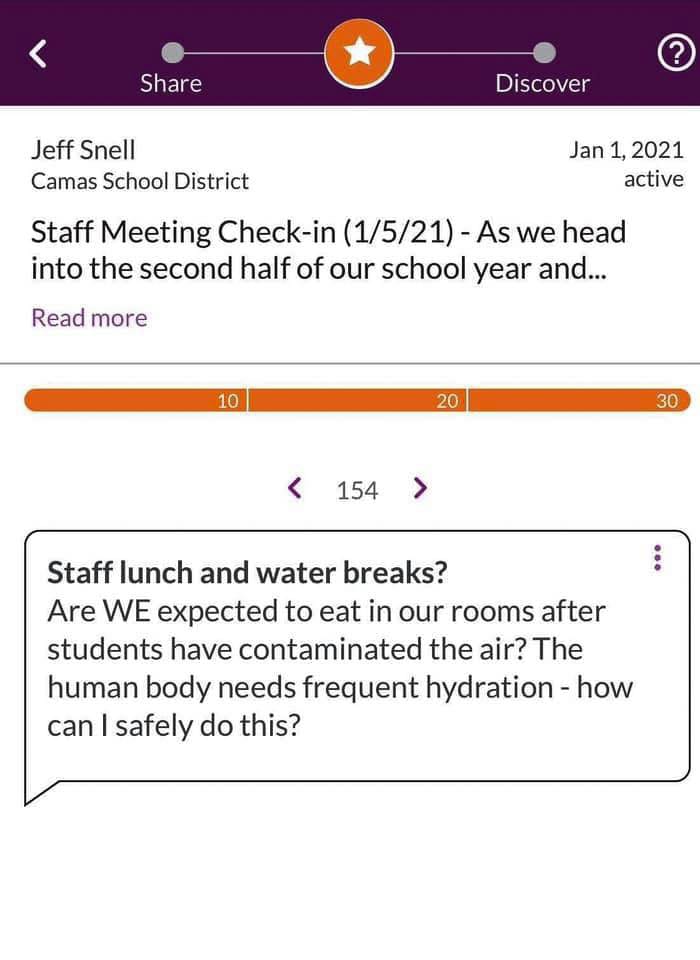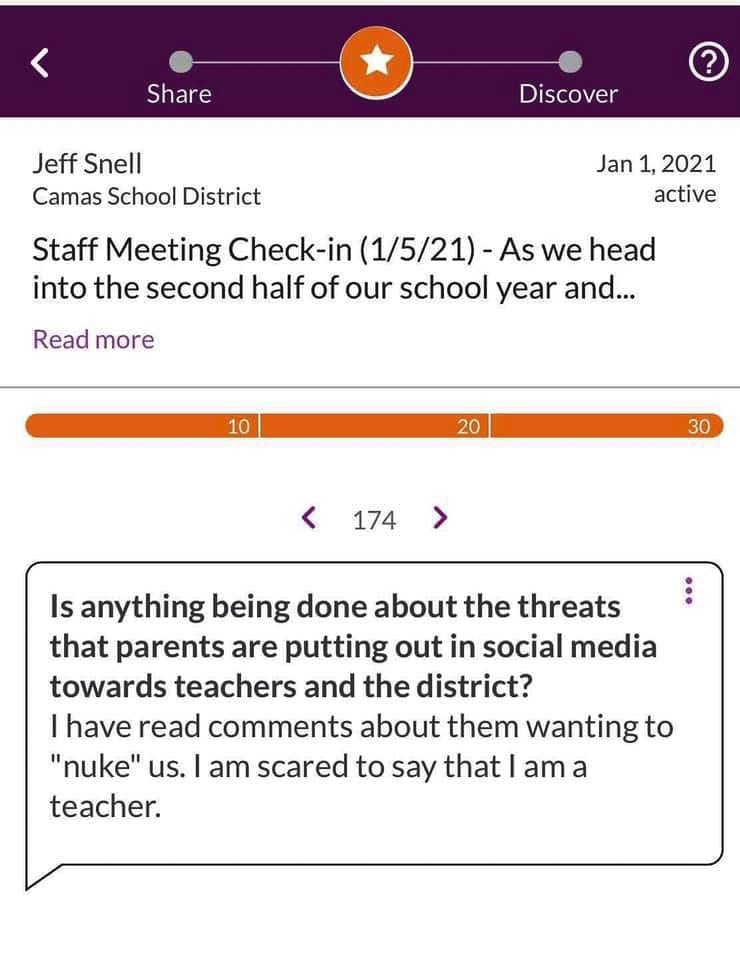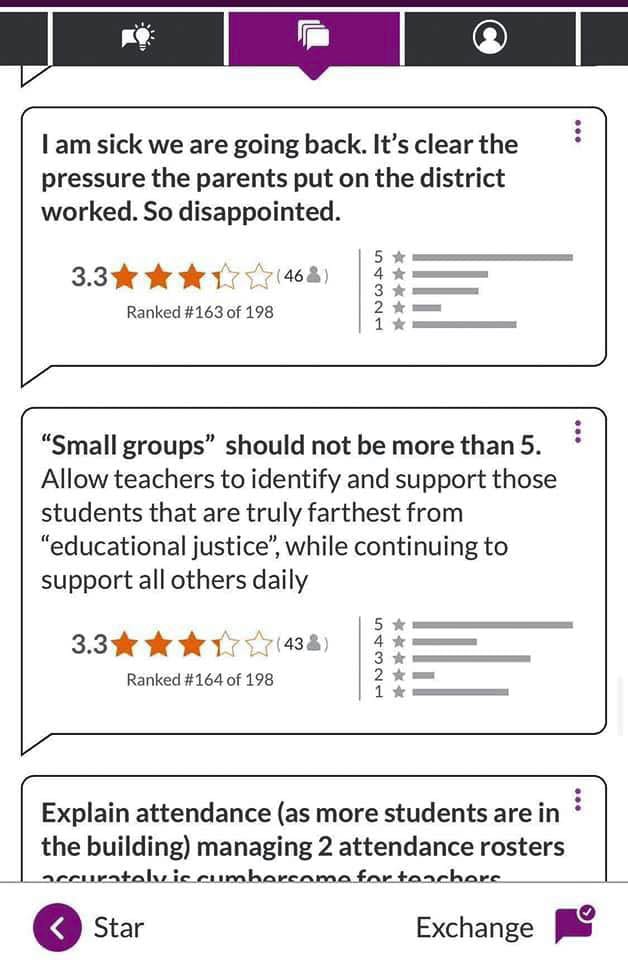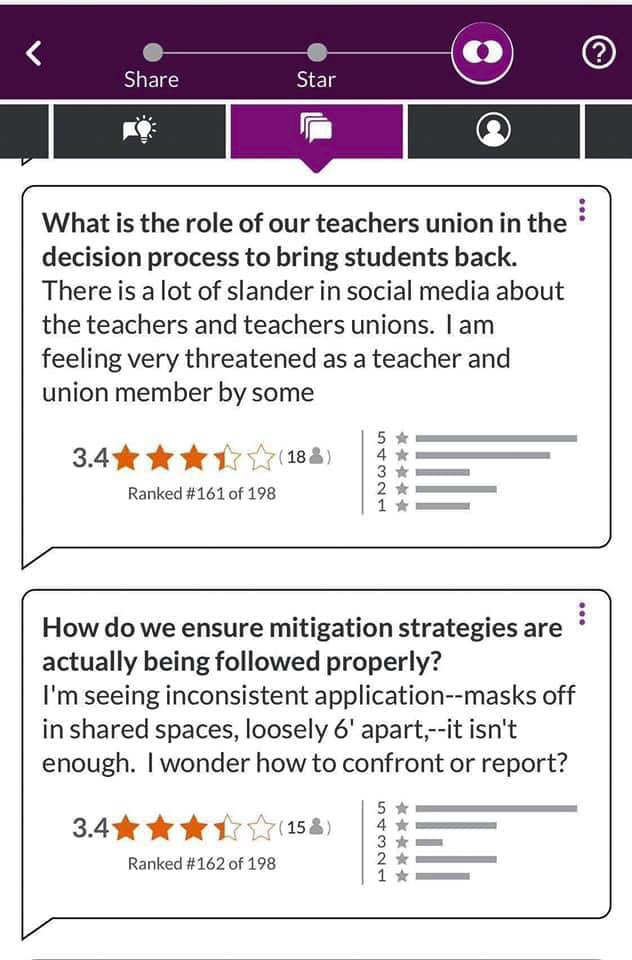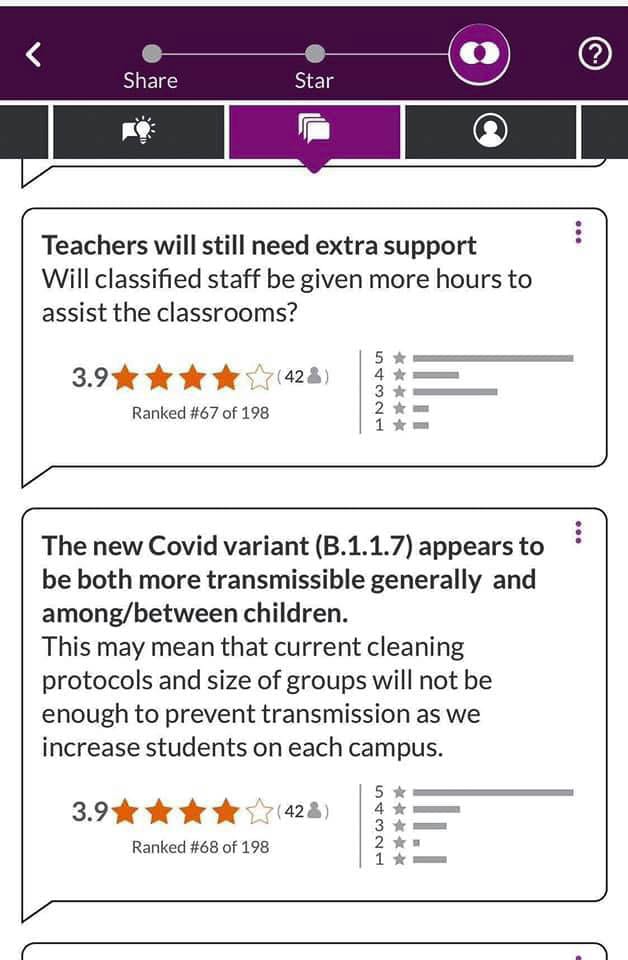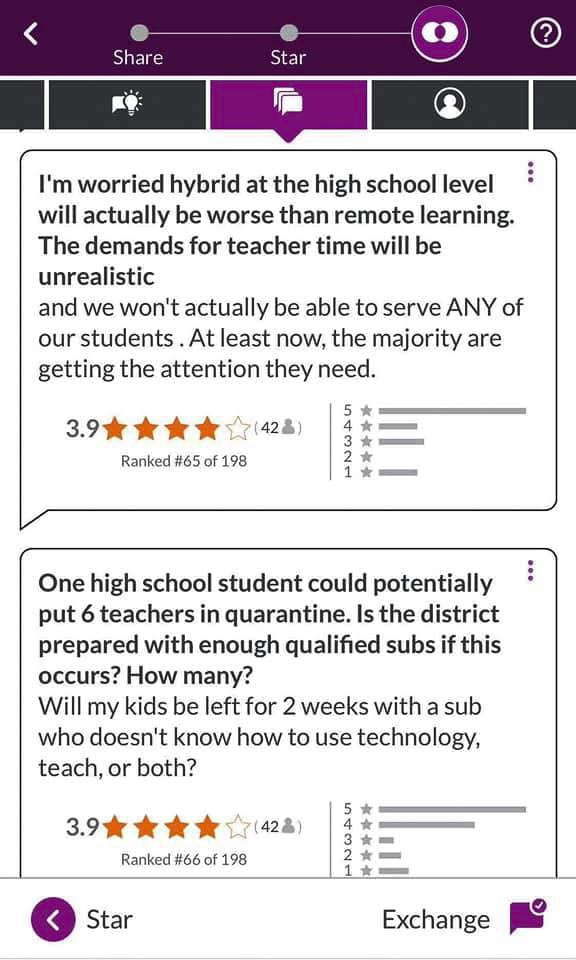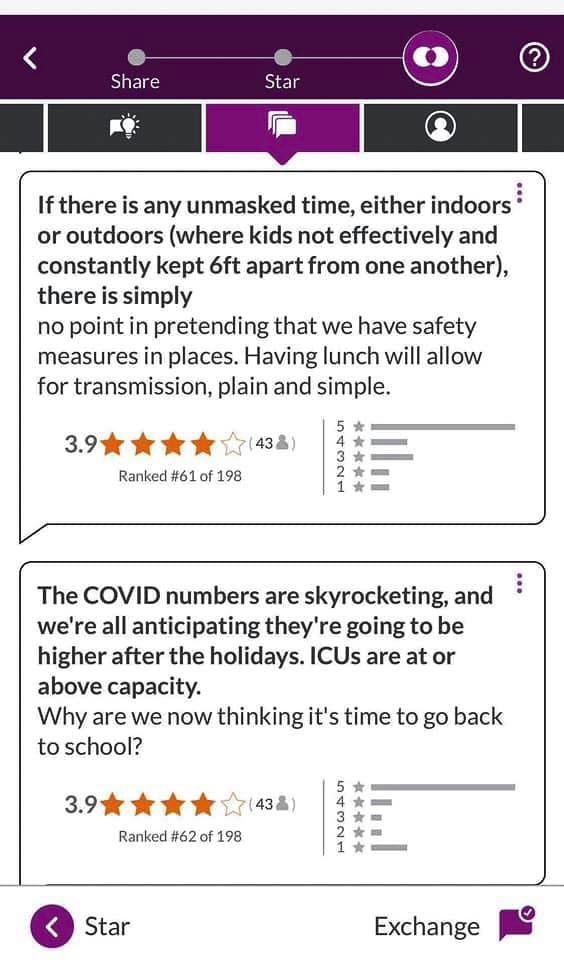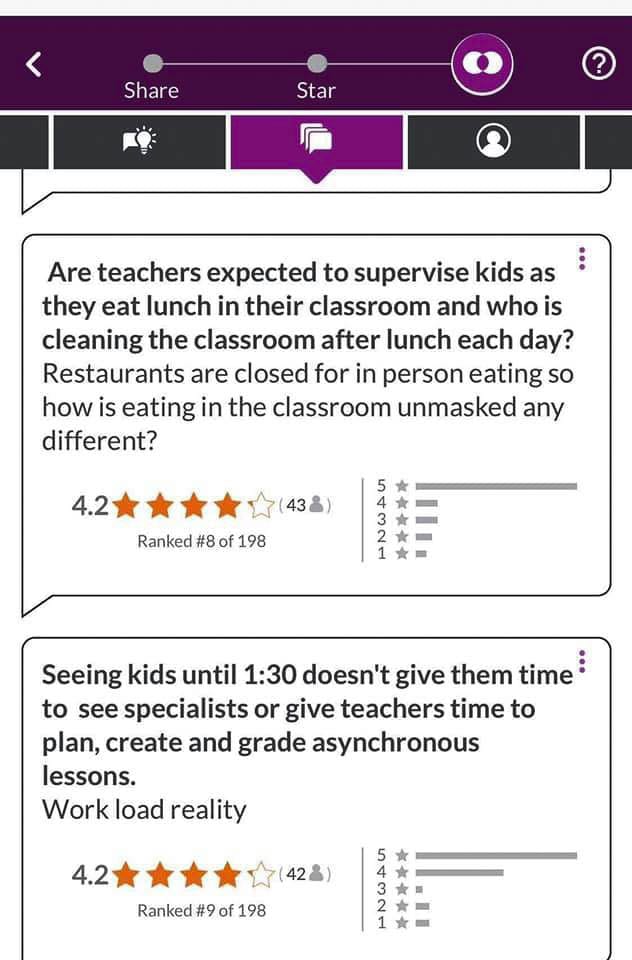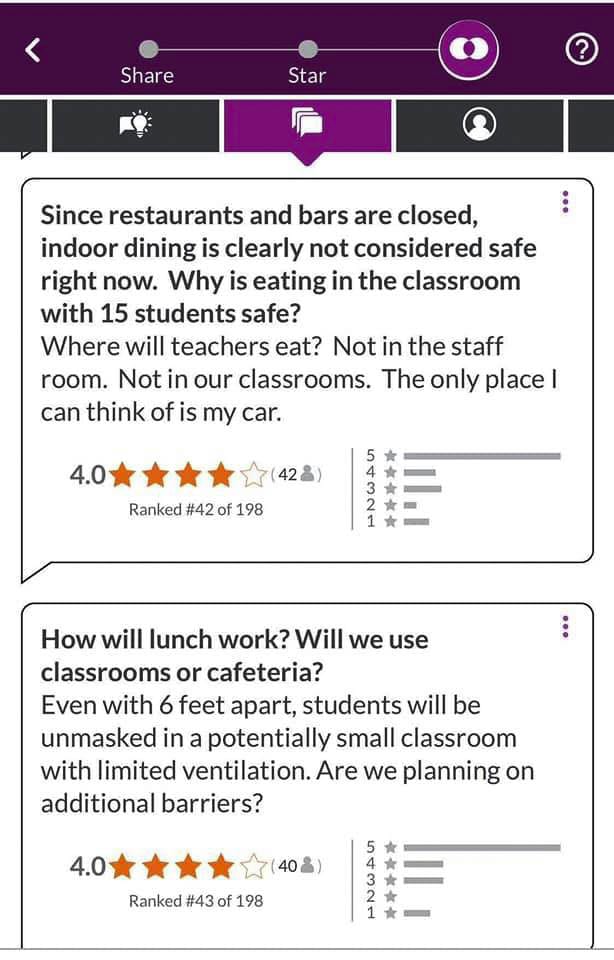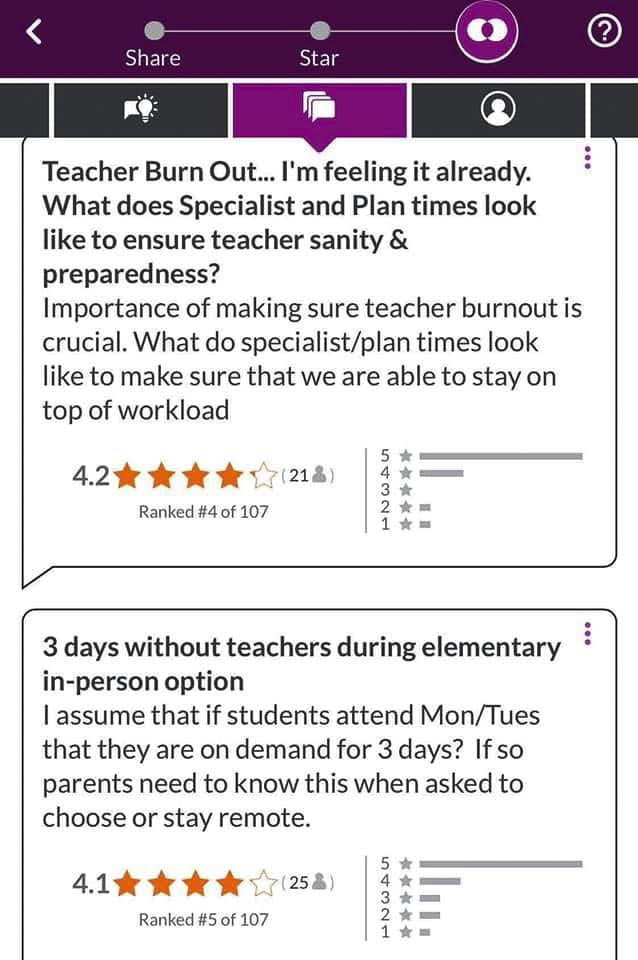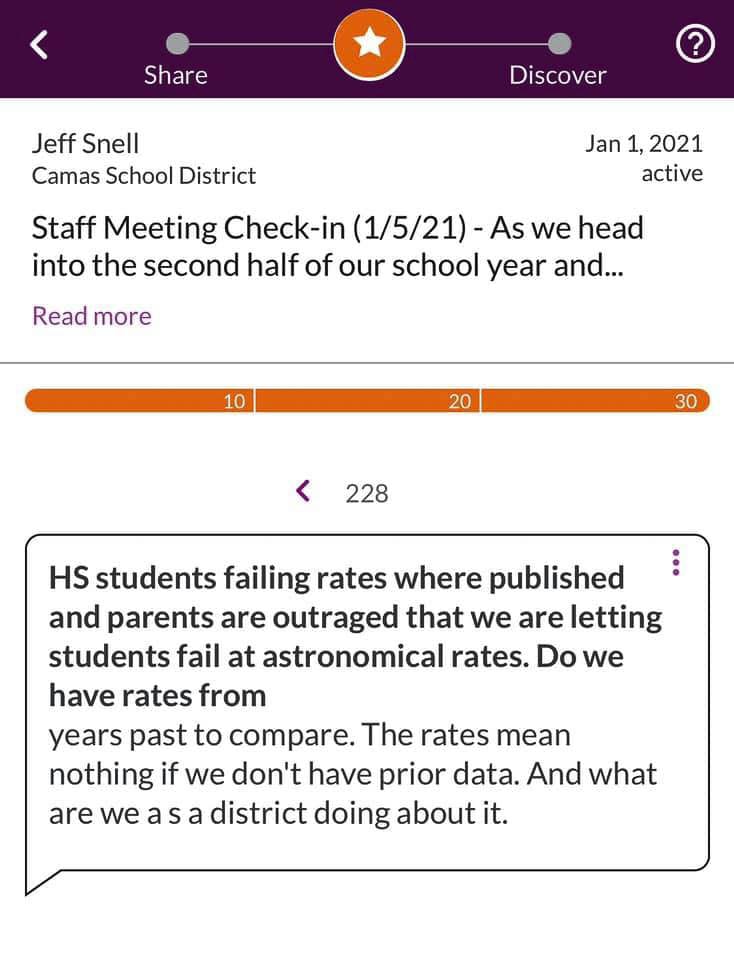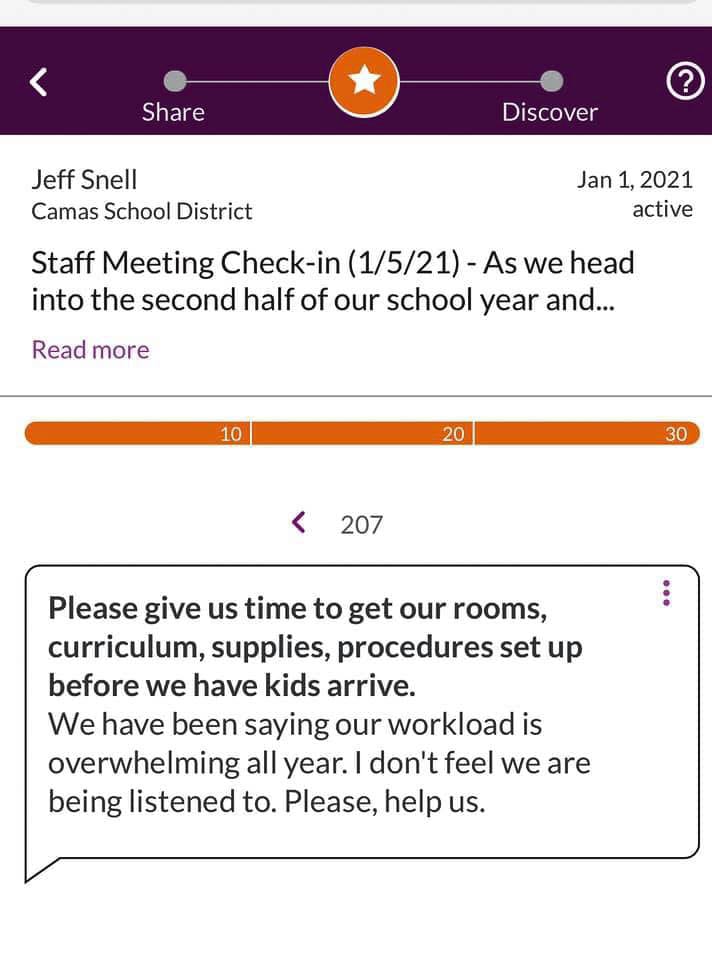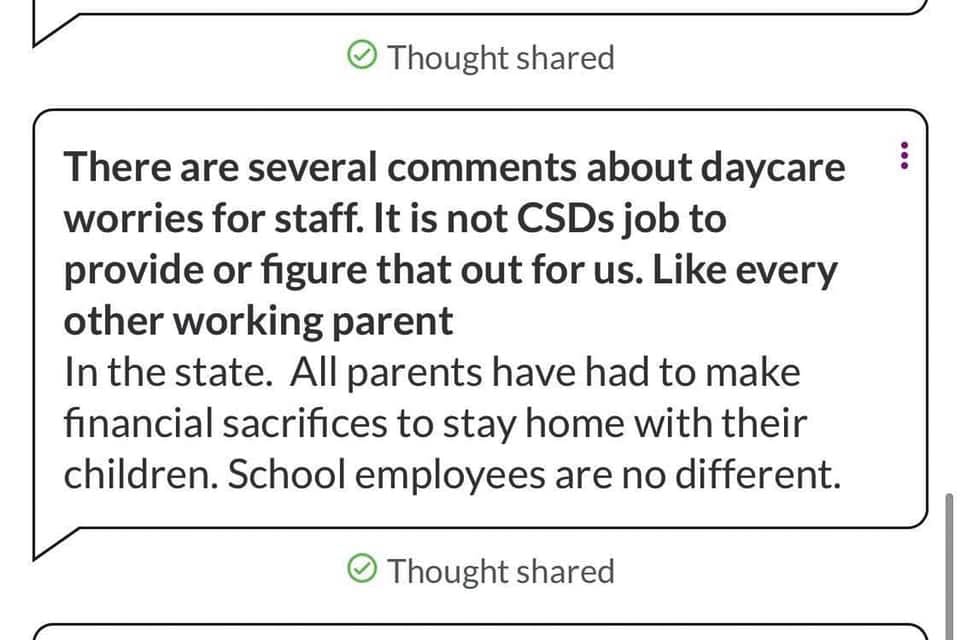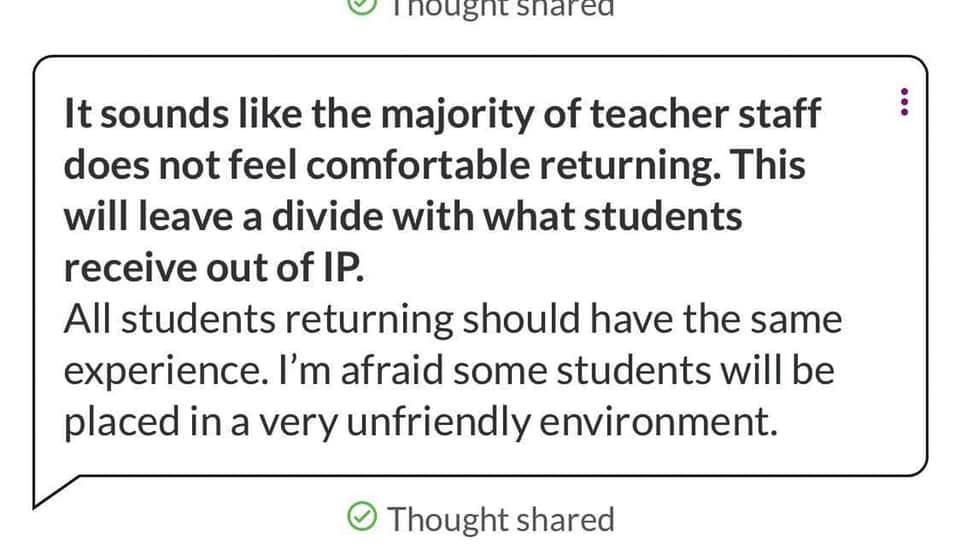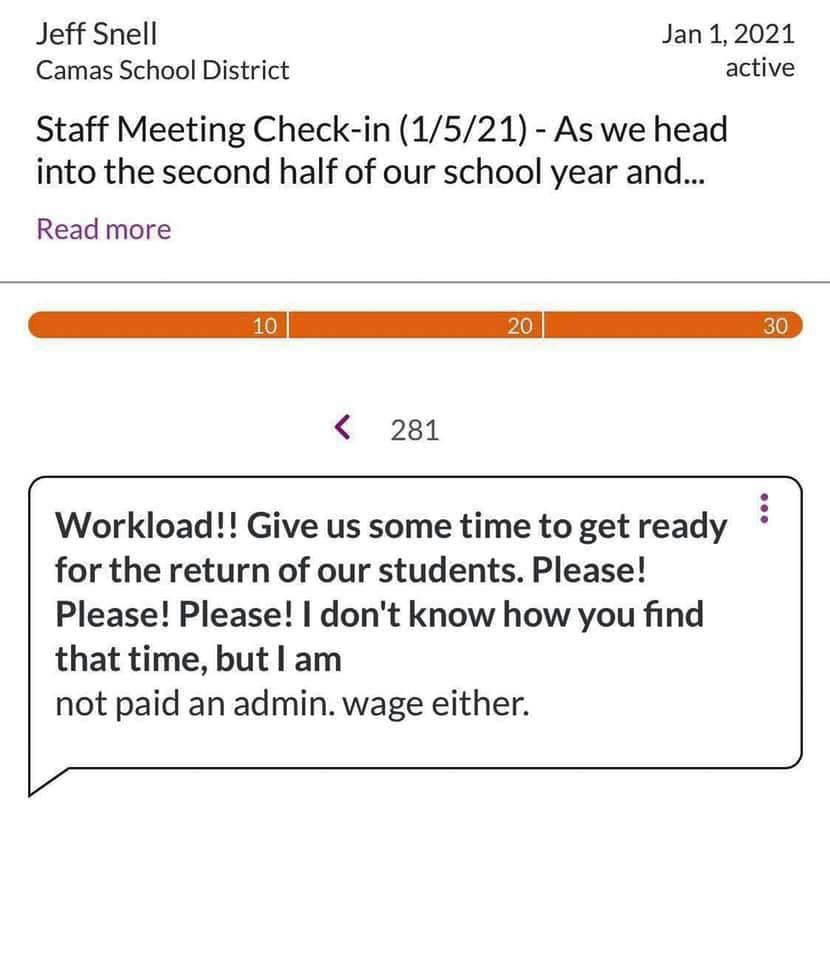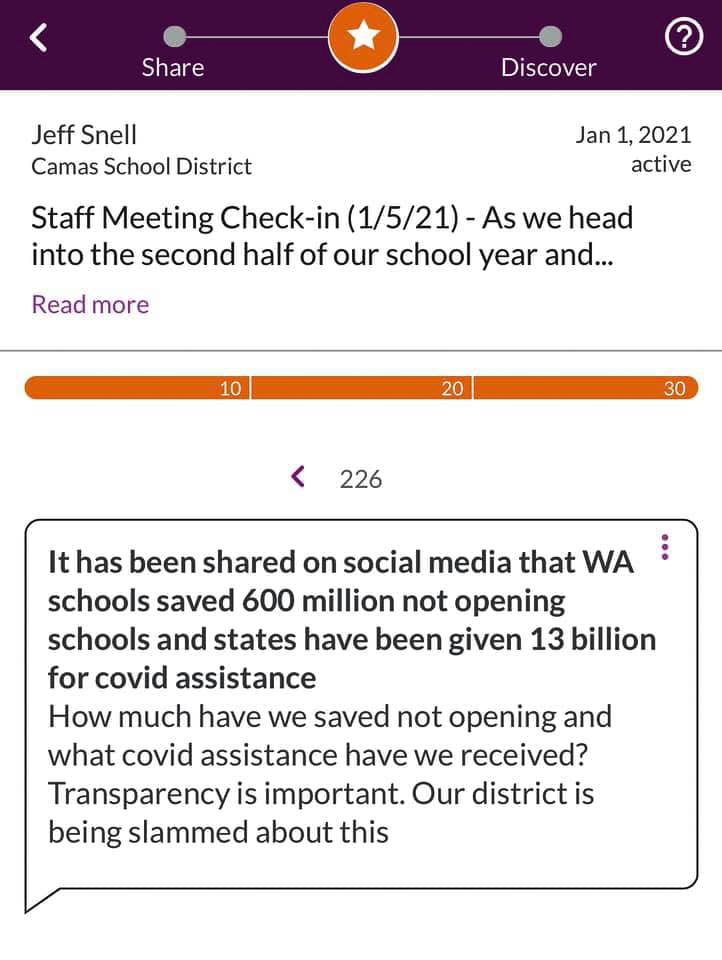Andrea Seeley has joined dozens of vocal parents fighting for their children to be in a classroom getting their education
Andrea Seeley is the mother of two students. She lives in Camas specifically because of the excellent reputation of the Camas School District (CSD). Yet, she says the remote learning offered by the district is not working for her children.
Seeley has joined dozens of vocal parents fighting for their children to be in a classroom getting their education. She has become an activist on social media and at protest rallies. She never expected to be known as one of the leaders, but she won’t back down when it comes to her childrens’ education.
“I think the most important thing to remember is that this is about the kids,” she said. “It’s not about politics, it’s not about egos. It’s fear. It should always remain about the kids. And I think that’s getting lost in all of this.”
Parents have written countless emails to Jeff Snell, superintendent of the CSD. They listen to every school board meeting and scrutinize all the communication sent by the district. They have lost confidence that their voice is being heard.
Many of the parents believe their concerns are being ignored or marginalized. Others believe the teachers union is in control rather than parents.
One parent shared that her child has an ADHD diagnosis and a 504 plan for special help. She asked the school counselor for help but was told no help was available. “At this time the main threshold the Student Support team is using is students with 5+ failing grades (or mixture of D/F).”
“The threshold is failing five or more classes,” said the mom. “You’ve essentially got to be flunking out of school to get help.”
A few teachers share the concerns of Seeley and the activist parents. They shared communications from a CSD chat room, known as the Thought Exchange. Seeley was asked to share them on social media, which has caused quite a stir. The comments provide insight into the thinking of some of those teaching Camas children.
Here are some of the comments as typed by the educators:
• “Are WE expected to eat in our rooms after students have contaminated the air? The human body needs frequent hydration — how can I do this?”
• “I am sick we are going back. It’s clear the pressure the parents put on the district worked. So disappointed.”
• ”What is the role of our teachers union in the decision process to bring students back. There is a lot of slander in social media about teachers and teachers unions. I am feeling very threatened as a teacher and union member by some … “
• “Teacher kids — with ms/hs going half days, how are our personal kids going to make it to and from school if we don’t have bussing or are on a boundary exception”
• “How will you handle daycare of teachers with students?”
• “One high school student could potentially put 6 teachers in quarantine. Is the district prepared with enough qualified subs if this occurs? How many? Will my kids be left for 2 weeks with a sub who doesn’t know to use technology, teach or both?”
• “If there is any unmasked time, either indoors or outdoors (where kids not effectively and constantly kept 6ft apart from one another), there is simply no point in pretending that we have safety measures in places. Having lunch will allow for transmission, plain and simple.”

The thought exchange allowed fellow educators to rate the comments, giving them 1 to 5 stars. Seeley noted that many negative comments about parents or kids spreading the virus received the most stars, while the few advocating for the kids to be back in school received very few stars.
“I think it’s fair for everyone to know both sides and to know what’s going on behind the scenes,” she said. “Otherwise, parents can’t make informed decisions about their kids’ futures, and about what to do about school.”
Seeley mentioned a comment made on the Open Camas Schools Facebook page about “what’s done in the dark will come to light.”
“We’d rather know sooner than later,” she said. “It’s not fair to hold back the truth from us, based on unions and school superintendents and governors and decisions that are being made behind closed doors that we have no control over.”
Fellow activist Heather Wynn shared: “it is imperative for parents to know the real intent of those teaching their children. If we are to put our trust and faith in them, I think seeing a little of their true character isn’t a bad thing. Why should the Board and Superintendent be the only ones to know the concerns, thoughts and struggles of teachers? Do they want us to help or just sit back and shut up?”
The parents cite examples of other schools being open with no or minimal risks for students and staff, including Seton Catholic High School here in Clark County and the Mead School District in Spokane.
Seeley mentioned the Jack, Will and Rob Center (JWR), operated by the CSD. JWR has been open since March 17, with no PPE required until June according to Seeley.
CSD also provides childcare at JWR and the Zellerbach administration center. Seeley reports the children wear masks and successfully practice safety protocols. Each location has no more than 20 students at a time. There have been no reports of COVID at either location.
Private schools like King’s Way Christian, Camas Christian Academy, the Spanish immersion school and Riverside Christian School all have in-class instruction according to Seeley. She also mentioned that CSD has been offering daycare with no problems.
A School is Essential group shared the following on Wednesday. “As of October, 115 school districts in WA were providing in-person learning to more than half of their students. 90% of Washington’s 73,000 private school students are in full or hybrid in-person learning.”
The parents cite Dr. Anthony Fauci, the World Health Organization, and Washington Superintendent of Public Instruction Chris Reykdal, all saying it is best for children to be in school full time.
And yet some of the teachers feel otherwise, as they shared on the Thought Exchange.
“Are teachers expected to supervise kids as they eat lunch in their classroom and who is cleaning the classroom after lunch each day?,’’ read one post. “Restaurants are closed for in-person eating so how is eating in the classroom unmasked any different?”
“Since restaurants and bars are closed, indoor dining is clearly not considered safe right now,’’ stated one post. “Why is eating in the classroom with 15 students considered safe? Where will teachers eat? Not in the staff room. Not in our classrooms. The only place I can think of is my car.”
Yet Seeley was heartened by how a few of the educators responded to their fellow teachers.
• “I’m sad with this feedback. Are we trying to work towards serving our students in our community? The children and parents are relying on us. These comments show me that we are trying to find every excuse on how we can’t or shouldn’t. This is not the school district I thought we were.”
• “The CDC, state and federal governments have all said that it is better for students to be in school and that the affects of not being in school outweigh the risk of COVID infection in school. Why does CSD believe they are more qualified than the experts to decide to keep schools shuttered?”
• “I am amazed at the hubris of our teachers. You are not more special than the Costco checker, the Para, the admin, or anyone else who works with people. Don’t lecture me about safety when you spend Thanksgiving in Palm Springs, or send your kid to the same preschool as admin who is in the building.”
Emily Watts is another concerned parent, fighting for the schools to reopen. She helped create a “United for In Person Learning in Clark County” Facebook page. “I think we are all entitled to voice our concerns, frustrations, etc regardless of how small or silly they seem,” she said.
In discussing the thought exchange comments Watts shared the following. “These kinds of things are only creating a bigger divide that is emerging — parents versus teachers. That relationship is not going to be the same and is likely irreparable.”
Watts noted that on social media there is a lot of disrespect on both sides. “I think the Thought Exchange and the United for In Person Learning in Clark County boils down to two departments: 1) solution focused ideas and 2) complaining. If it’s constant complaining, take it to your counselor. There is no time to waste on whiners.”
Seeley ended by making a plea to those in charge. “Some of the mental health issues that are emerging are an epidemic,” she said. “It’s an emergency that needs to be solved right now, not months from now. I hope that those in charge are listening not only to the parents, but to the kids.”
“This is not something that we can just ignore and put off,” she said. “The kids need us, the kids need you guys. They need you to make the right decisions for them right now.”





